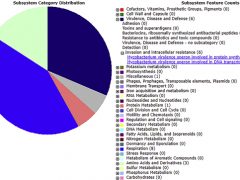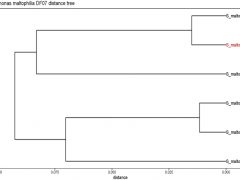Stenotrophomonas maltophilia DF07 is a gram negative bacterium isolated from polluted San Jacinto River sediment near Moncrief Park in Channelview, Texas. The genome of strain DF07 (chromosome and plasmid) was compiled at the scaffold level and can be accessed through the National Center for Biotechnology Information database under accession NZ_NJGC00000000. The DF07 genome consists of a total of 4,801,842 bp encoding for approximately 4,351 functional proteins. Approximately 86 proteins are associated with broad-spectrum antibiotic resistance, 11 are associated with bacteriocin production, and a total of 17 proteins encode for an assortment of Mycobacterium-like virulence and invasion operons. S. maltophilia DF07 is genetically similar to the nosocomial S. maltophilia strain AU12-09, but also harbors an unusually large plasmid that encodes for over 150 proteins of unknown function. Taken together, this strain is potentially an important antibiotic reservoir and its origin within a recreational park merits further study of the area.
Images are from the NCBI publication (top left to right).
* Subsystem category distribution of major protein coding genes on the chromosome of S. maltophilia DF07 as annotated by the RAST annotation server.
* Subsystem category distribution of major protein coding genes on the plasmid of S. maltophilia DF07 as annotated by the RAST annotation server.



